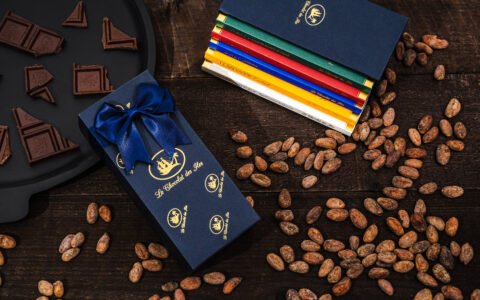
3 Methods To Melt Dark Chocolate Correctly
Turning solid chocolate into smooth, liquid goodness is an important skill for making delicious chocolate treats. The key to making your favorite chocolate desserts often comes down to one thing: understanding how to melt dark chocolate and all kinds. Don’t worry, it’s not too hard.
There are simple tips you should know, and we’ll tell you!
Best Chocolate For Melting
Chocolate that has more cocoa butter and fat in it melts quicker. This means that dark chocolate melts the fastest. When it melts, it becomes shiny and gooey in a nice way. Quality dark chocolate that has at least 70% cocoa solids, will give a stronger and richer taste.
Dark chocolate melts faster because it’s more like how chocolate is found in nature. When we add things like milk, sugar, and fats to chocolate, it takes longer to melt because these things have different temperatures at which they turn into liquid.
Chocolate Melting Points
The melting point of chocolate is when it changes from being hard to becoming liquid. This is super important for people who cook at home or in restaurants because getting the right melting point can make the difference between great chocolate treats and a big mess.
Chocolate has something called cocoa butter, which is the fat part of cocoa beans. It’s what makes chocolate feel smooth. When we heat cocoa butter, it turns into liquid. Cooling makes it solid again.
The melting point of cocoa butter is kind of like our body temperature. That’s why chocolate can melt in your mouth. But if it gets too hot, the chocolate can get lumpy and lose its shiny look.
If it’s too cold, the chocolate can become crumbly and hard to shape. This is where “tempering” comes in. Tempering is a way of heating and cooling chocolate to make sure it gets the best texture, taste, and look.
Tempering Chocolate
Getting chocolate ready for making candies and treats requires tempering. It involves heating and cooling the chocolate in a certain way. This makes the chocolate shiny, stops it from melting too quickly, and helps it become perfect for dipped treats.
Just remember to be careful with the temperature! Don’t let the chocolate get hotter than 130°F. Chocolate doesn’t like too much heat, or it can become burnt or stiff. Also, make sure everything you’re using is completely dry before you melt dark chocolate. Moreover, even a tiny bit of water can make the chocolate go all weird and lumpy.
Best ways to melt dark chocolate
Microwave
- Put the chocolate in a bowl that’s safe for the microwave.
- Heat it for 30 seconds at medium.
- Get it out and stir.
Microwaves can be different, so watch it closely. When there are just a few small lumps left, take it out and keep stirring until it’s all melted.
Double boiler
- Break the chocolate into small pieces.
- Put the pieces in a bowl that can sit on top of a pot with hot water. If you don’t have that special bowl, you can use a regular bowl on top of a pot with some water.
- Let the chocolate melt.
Sometimes stir it gently while it melts until it becomes smooth.
Direct heat
When you want to mix chocolate with batter or melt it with butter, using direct heat is good. But if you’re trying to shape or dip chocolate, there’s a better way.
- Put the chopped or broken chocolate in a pot on very low heat.
- Keep stirring a lot so it doesn’t burn.
- Take it off the heat when only a few small lumps are left, and keep stirring until it’s all melted.
/*54745756836*/


